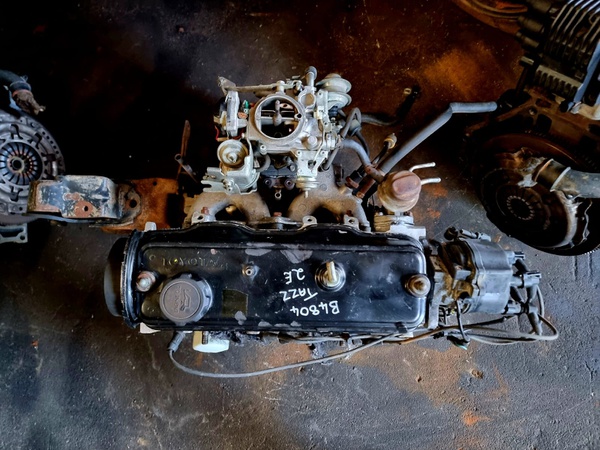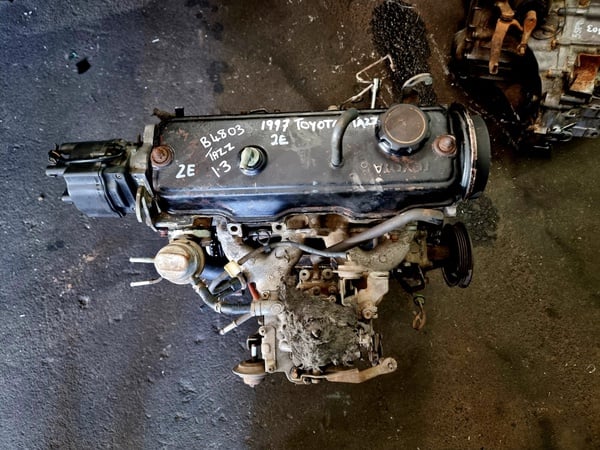Discover the most recent Patterns in Engine Modern Technology Through Tazz
In the swiftly developing landscape of automobile innovation, Tazz stands at the leading edge, highlighting significant developments in engine systems that prioritize both technology and sustainability. From hybrid engines that optimize fuel effectiveness to the emergence of hydrogen gas cells, the patterns shaping modern-day powertrains are not just improving efficiency yet likewise attending to crucial environmental difficulties.
Hybrid Engine Innovations
Crossbreed engine innovations stand for a crucial shift in vehicle technology, combining the benefits of internal combustion engines with electrical propulsion systems. This integration not only improves fuel performance but also lowers discharges, conference progressively strict environmental guidelines. By using both energy resources, hybrid engines can maximize efficiency, providing power when required while saving fuel throughout much less demanding motoring problems.
Recent advancements in crossbreed innovation include improvements in battery performance and regenerative braking systems. These innovations enable higher power recovery during deceleration, which can be rerouted to assist in acceleration or power accessory systems. Makers are concentrating on light-weight materials and portable styles to optimize the efficiency of crossbreed powertrains.
The development of plug-in hybrids has actually also increased the marketplace, allowing motorists to bill their cars using typical electric outlets. This feature usually allows for considerable all-electric range, additional decreasing dependancy on traditional gas. tazz. As the vehicle sector remains to evolve, hybrid engine modern technologies are expected to play an important role in bridging the gap between traditional automobiles and totally electrical versions, offering a transitional solution that provides to diverse consumer needs and choices
Advancements in Electric Powertrains
The auto landscape is swiftly progressing, with electrical powertrains arising as a leading pressure in sustainable transport. Breakthroughs in electric vehicle (EV) technology are dramatically enhancing efficiency, user, and efficiency experience. Trick innovations include improvements in battery chemistry, which have boosted energy density, lowered billing times, and expanded general battery life.
Solid-state batteries, for instance, assure to change the marketplace by offering higher safety and performance contrasted to conventional lithium-ion cells. Advancements in regenerative braking systems are allowing lorries to recoup power during deceleration, contributing to overall efficiency.
In addition to battery innovation, electric motor designs are becoming a lot more sophisticated. Developments such as incorporated electric motors and progressed thermal management systems are aiding to optimize power distribution and decrease weight, eventually improving lorry dynamics.

Collectively, these advancements highlight the commitment to shift towards cleaner, more reliable transportation services, placing electrical powertrains at the forefront of automotive innovation.
The Surge of Hydrogen Fuel Cells
Progressively, hydrogen gas cells are obtaining grip as a viable option to traditional internal combustion engines and battery electric cars. This technology uses the chemical energy stored in hydrogen, converting it into electrical power through an electrochemical reaction with oxygen. The key by-product of this procedure is water, making hydrogen fuel cells an eco-friendly option with no emissions at the tailpipe.

Car manufacturers are significantly get redirected here purchasing hydrogen gas cell innovation, identifying its capacity for long-range applications and rapid refueling abilities that match standard fuels. Furthermore, sectors such as sturdy transport and public transportation are especially appropriate for hydrogen gas cells, where battery electric services might fail as a result of weight and range restrictions.
As research and investment remain to expand, hydrogen gas cells are positioned to play a substantial duty in the future landscape of clean transport and power options.
Enhancements in Internal Burning Engines
Advancements in internal combustion engine (ICE) modern technology are transforming traditional vehicles to satisfy modern-day ecological standards and efficiency assumptions. Among one of the most considerable improvements includes the combination of innovative gas shot systems. These systems enhance the air-fuel combination, boosting combustion performance and leading to decreased discharges. Straight fuel shot, for example, permits read here much better atomization of gas, leading to even more full combustion and improved power output.
In addition, turbocharging has gotten prominence, allowing smaller engines to deliver higher efficiency without the weight of larger engines - tazz. This technology not just enhances performance yet also adds to lower gas intake. Variable shutoff timing systems are also being fine-tuned, allowing engines to adapt to various driving problems for enhanced torque and responsiveness
Additionally, making use of light-weight products in engine construction is coming to be conventional, more boosting gas performance by minimizing general automobile weight. Engine control devices (ECUs) are progressively advanced, making it possible for real-time modifications that maximize performance and exhausts.
These improvements collectively symbolize a critical shift in ICE modern technology, lining up with international sustainability goals while still giving the efficiency motorists get out of their cars. As the market develops, these improvements remain to shape the future of typical auto design.
Future Patterns in Engine Efficiency
Considerable improvements in engine effectiveness are expected as producers concentrate on integrating innovative innovations to meet strict environmental policies and consumer demands. The shift in the direction of electrification, crossbreed systems, and different fuels is improving the vehicle landscape, check my reference driving innovations that enhance gas economy and minimize discharges.
Among the essential trends is the execution of sophisticated products and manufacturing methods. High-strength alloys and lightweight compounds contribute to reduced car weight, thus enhancing overall effectiveness. Additionally, the fostering of turbocharging and variable shutoff timing modern technologies permits for improved power result from smaller engines, even more boosting fuel economic climate.

Conclusion
Finally, the exploration of engine innovation reveals considerable developments that prioritize sustainability and effectiveness. Innovations in crossbreed engine systems, electrical powertrains, and hydrogen fuel cells show a dedication to decreasing exhausts while enhancing performance. In addition, enhancements in interior burning engines and a concentrate on lightweight products add to total engine effectiveness. As the automotive industry proceeds to advance, these trends will play a critical role in shaping a cleaner and even more lasting future for transport.
From hybrid engines that enhance fuel effectiveness to the introduction of hydrogen gas cells, the fads forming modern-day powertrains are not just boosting efficiency yet additionally resolving critical environmental challenges.Crossbreed engine innovations stand for a crucial change in auto modern technology, incorporating the advantages of inner burning engines with electric propulsion systems.Additionally, turbocharging has gained prominence, permitting smaller sized engines to provide higher performance without the weight of bigger engines. In addition, the fostering of turbocharging and variable valve timing technologies allows for boosted power outcome from smaller engines, even more enhancing gas economic climate.
Enhancements in internal burning engines and an emphasis on light-weight materials add to general engine efficiency.
Comments on “Toyota Tazz: Understanding Its Popularity in the Used Car Market”